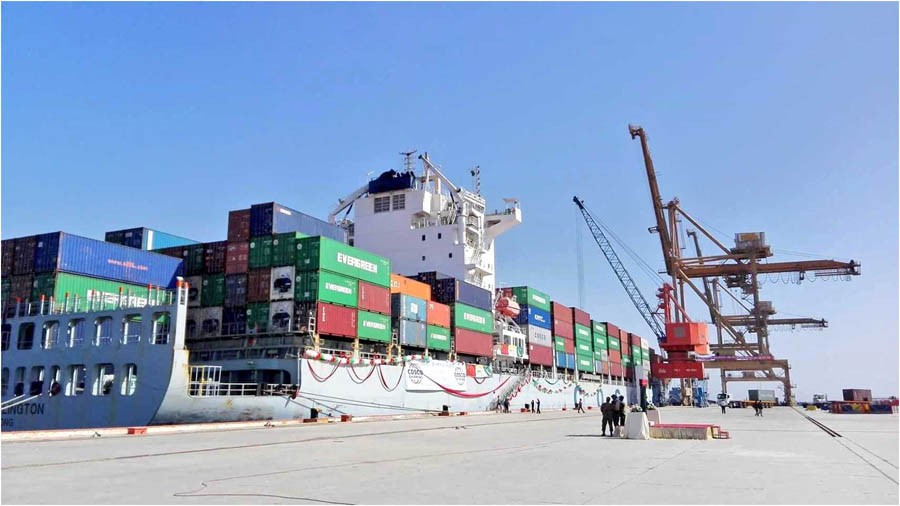
Even though textile and garments exporters are optimistic about exports, they are also skeptical of bureaucratic delays in implementation of policies

Although the Pakistan Tehreek-e-Insaf (PTI) government has succeeded in containing trade deficit by about 13.2 percent, exports of the key products have not increased significantly and it is now clear that the government would not be able to meet the 27 billion dollar export target for the current fiscal year.
Rupee devaluation last year has not played a significant role in increasing exports. Economic experts believe the impact of currency devaluation would be reflected in the coming months. As buyers in the international market are already aware of the currency devaluation in Pakistan, they have demanded reduction in prices as well.
Decline in trade deficit during eight months of the current fiscal year is mainly attributed to discouragement of imports as the government had imposed regulatory duties on many non-essential import items, which has caused drop in the import bill by 7.96 percent during the 9 months of the current fiscal year.
Pakistan’s imports were over $ 40.75 billion dollars till February 2019 against 44.28 billion in the corresponding period of the last fiscal year.
"It is a silver lining for the economy that imports-led trade deficit has been controlled," says Majyd Aziz, former President Karachi Chamber of Commerce and Industry (KCCI). However, trade deficit would further decline when exports are increased due to impact of rupee devaluation by June.
Aziz believes the government is encouraging exporters to increase their production volume in the light of a number of incentives recently announced. Pakistan traditionally exports textile and its allied products like garments, hosiery and towels, but other export products like rice, surgical equipment and sports goods are also in high demand.
"There is a lot of potential to increase exports of non-traditional items like Information Technology services and software," he adds.
Pakistan also enjoys duty free Generalised Scheme of Preference (GSP) Plus facility under which Pakistani businessmen can send their products to the European markets without paying any duty. This facility is available since 2014. Traditionally, US, UK and European Union are the main markets for Pakistani textile and leather products.
According to Aziz, Pakistan has the potential for substitute imports. "For example, import bill for edible oils has significantly reduced in recent years as the local industry is extracting soybean oil from the imported seeds." Earlier, Pakistan used to import soybean oil for refining and packing, but now soybean seeds are imported from the US and local oil mills are extracting oil and processing it, which has not only reduced the import bill but also created a new market for export of soybean meal from Pakistan.
Soybean meal is a substance left after extracting oil, which is used in production of chicken-feed and there is also a demand of the product abroad, especially in China. Pakistan is using soybean meal in producing chicken feed as the poultry sector has increased.
Exporters have been facing various problems like lack of finances, duty drawbacks and high rates of utility tariffs for many years now, but those problems further aggravated during the current fiscal year as the export-oriented large-scale manufacturing sector’s production is subdued due to increase in input costs.
"The cost of production is still much higher in Pakistan than in our competitor countries like Bangladesh and India," says Javed Bilwani an exporter of fashion apparel and Central Chairman of Pakistan Hosiery Manufacturers & Exporters Association (PHMA). Utility charges, for instance, are much higher in Pakistan as compared to Bangladesh and India where exporters receive subsidies.
"Closure of an export-oriented factory for one day in Karachi due to load shedding may cause 7 percent loss in the production of exportable products," he says. The government must ensure uninterrupted power supply to the industries in order to meet the exports target.
According to Bilwani, recently the federal government has announced to cut power tariff for five export-oriented industries to provide incentives to the export sector of Pakistan. These are: textile, leather, sports, surgical and carpet. These sectors are also zero-rated in duties.
The federal government has offered some incentives to the export industries, including exemption from the recent hike in natural gas prices and reducing the price of imported liquefied natural gas (LNG) to Rs600 per one million British Thermal Units (MMBTU), from Rs1500 per MMBTU. Moreover, import duty on some raw materials used in the processing of export products have also been slashed down.
Delay in the implementation of the above incentives is a cause of concern for the exporters as they complained that due to bureaucratic snags these incentives have still not been materialised.
Textile sector is the worst hit. Many industries in Faisalabad, the textile hub, are either closed down or running in losses.
Also read: The devaluation factor
According to the State Bank of Pakistan’s Second Quarterly Report, performance of the textile sector, which is the largest exporting sector of Pakistan, remained subdued as its production came down by 0.2 percent in the first quarter of fiscal year 2018-19 as against the growth of 0.7 percent during the corresponding period of the last fiscal year. That growth was also not much even though it was supported by relaxation of duties and other incentives on exports.
Pakistan’s overall exports have increased just by 0.11 percent to 17.08 billion dollars during the period from July 2018 to March 2019 against the exports worth 17.06 billion dollars in the corresponding period of the last financial year, according to the Federal Bureau of Statistics.
Even though textile and garments exporters are optimistic of growth in exports in the coming months, they are also skeptical of the bureaucratic delays in the implementation of policies and incentives. They also fear that the incentives may be curtailed keeping in view conditionalities under the IMF loan, which Pakistan is currently negotiating to meet its fiscal deficit.